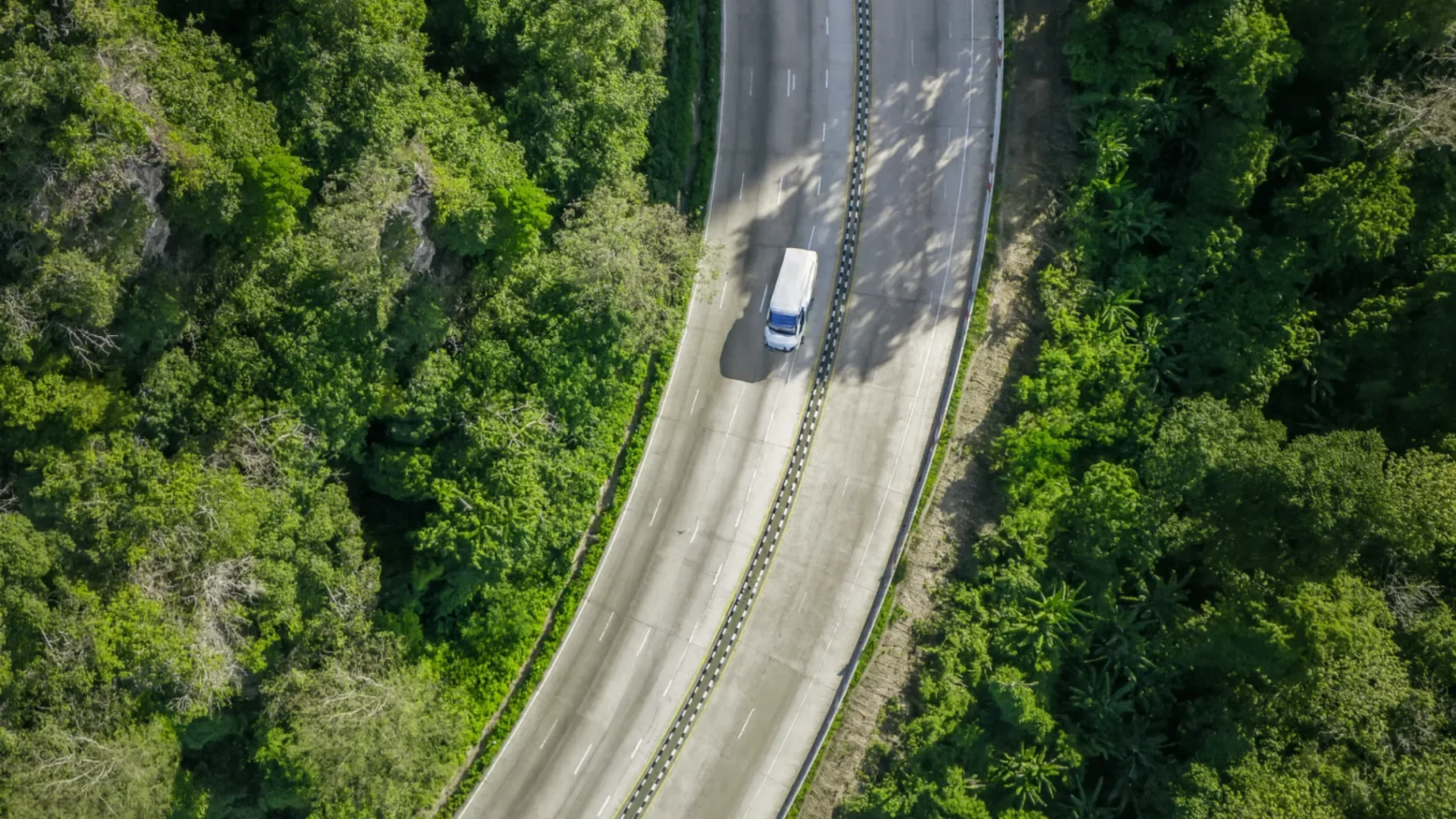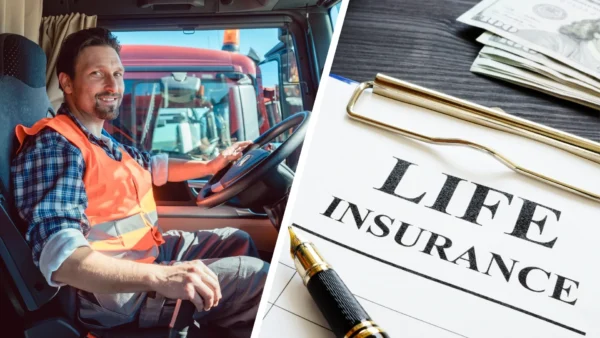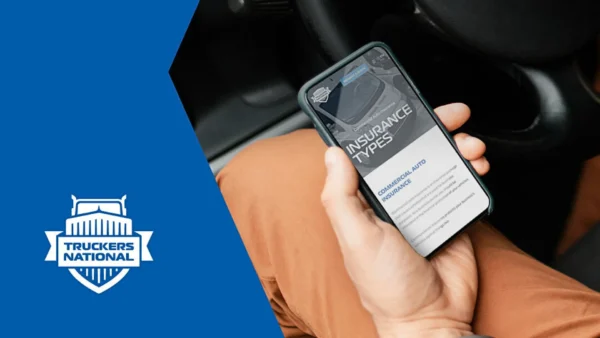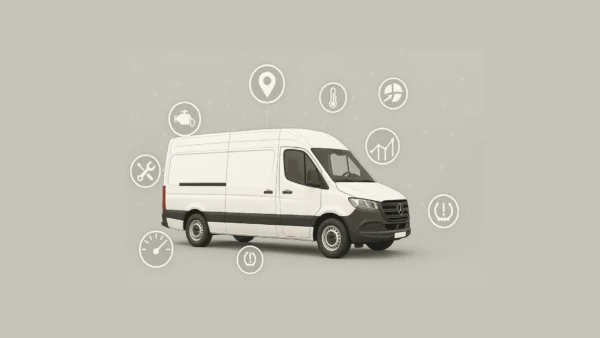08.20.25
Going Green in Trucking: What It Means for Your Fleet & Insurance
Rising diesel prices, stricter emissions rules, and growing customer demand for cleaner transport are causing big and small fleets to “go green.”
Making eco-friendly changes might sound daunting, but the payoff can be significant. From fuel savings to safer operations, “green” initiatives often go hand-in-hand with efficiency. And you’re not alone on this journey – Truckers National is here to guide you.
Why Going Green Matters for Fleets & the Environment
Implementing green practices delivers tangible benefits to both fleets and the environment. Let’s break down why “going green” truly matters:
Operational Benefits for Fleets
Many eco-friendly measures translate directly into cost savings and smoother operations. The most obvious is fuel efficiency. Every gallon of diesel saved is money back in your pocket. Considering fuel can account for roughly a quarter of a carrier’s per-mile operating costs (often the #1 expense), improving your miles-per-gallon by even a tiny percentage yields significant savings over time. Techniques like optimized routing and reduced idling cut fuel waste, which lowers your overall operating cost per mile.
Environmental and Community Impact
Heavy-duty trucks are a major source of emissions, not only carbon dioxide (CO₂) contributing to climate change but also pollutants like nitrogen oxides (NOₓ) and particulate matter. In fact, freight transportation (led by trucks) accounts for over half of NOₓ emissions in the U.S., which are a primary cause of smog and respiratory issues. Diesel trucks have historically been the fastest-growing contributors to these emissions.
For communities near highways and distribution centers, this can mean less asthma and healthier living conditions. And globally, every fuel reduction burned helps in the fight against climate change.
Competitive Advantage and Reputation
Shippers and business partners are increasingly looking to align with carriers that have sustainability credentials. If you can demonstrate your fleet’s carbon reductions or use of renewable fuels, you stand out in a crowded market. It’s a strong selling point when bidding on contracts – some companies require carriers to report on emissions or fuel usage now. Moreover, embracing sustainability signals that your operation is modern, proactive, and responsible.
Future-Proofing the Business
Regulations are only going to get stricter. By investing in cleaner technology and practices early, you’ll be ahead of the curve and avoid scrambling to comply later (when non-compliance could lead to fines or lost business). Similarly, as insurance and finance industries start considering sustainability in their risk profiles, early adopters might enjoy better rates or access in the future.
The Impact on Insurance
The area you might not immediately connect with “going green” is your insurance. But in fact, changes in your fleet’s operations caused by eco-friendly or non-eco-friendly initiatives will inevitably influence your risk profile and, thus, your insurance needs and premiums.
Lower Risks Mean Lower Premiums
A lot of green initiatives overlap with safety initiatives. For example, when you implement route optimization to cut down on fuel usage, you’re likely reducing total miles driven and time on the road, which statistically lowers the exposure to accidents.
It’s always a win-win: you save fuel and run a greener fleet, and you might also save money on insurance because you’re less of a liability. Some insurers also offer immediate discounts if you enroll in telematics or dashcam programs, or if you can show reduced incident rates.
Need for Specialized Coverage
On the other hand, going green can introduce new coverage considerations. It’s important to ensure your insurance adapts to the changes in your fleet. Suppose you add a couple of electric trucks or start using biodiesel or hydrogen fuel – you should review your policy details. A standard trucking insurance policy will cover your vehicles, but you want to be certain that things like expensive battery systems or specialized fueling equipment are accounted for in the replacement values. Electric trucks, for instance, might cost more to repair after an accident (battery packs are costly), so your physical damage coverage limits should reflect the higher value of the vehicle.
You also might consider coverage for equipment like charging stations at your warehouse – those could be added under property or inland marine insurance. If you’re hauling or utilizing alternative fuels, check for any exclusions or special clauses (some insurers treat certain fuels differently). Additionally, as the earlier discussion on risks highlighted, new technology can come with unique liabilities (e.g., an EV fire or a software malfunction in an advanced vehicle). It’s worth discussing with your insurance agent or broker whether you need any endorsements or riders for these situations.

Steps to Make Your Fleet More Eco-Friendly
- Assess Your Starting Point and Set Goals: Begin by understanding where your fleet stands today. Measure key metrics like your average fuel economy (MPG), total fuel consumption, idle time percentage, and maintenance costs. Many telematics systems, or even your fuel purchase records, can help calculate these. Also, note any client requirements or lanes with green potential (e.g., a dedicated route that might be perfect for an electric truck in the future). With that baseline in mind, set specific sustainability goals. Make sure goals are realistic and measurable.
- Perform Regular Maintenance and Tune-Ups: One of the simplest (yet most effective) green steps is taking meticulous care of your existing trucks. A well-maintained truck runs cleaner and more efficiently. This means sticking to maintenance schedules for oil changes, filter replacements, engine tune-ups, and emissions system checks. Improper tire pressure alone can sap your fuel economy, so consider a tire maintenance program (some fleets use automatic tire inflation systems or tire pressure monitoring to ensure optimal performance). Make sure aerodynamic components aren’t damaged – a bent fairing or missing side skirt can hurt efficiency.
- Optimize Routes and Reduce Idle Time: Efficiency in operations can greatly cut down fuel burn. Ensure you’re using route planning and optimization tools – this could be as high-tech as advanced routing software or as simple as better dispatch planning and communication. The goal is to minimize the number of miles driven and avoid wasted time. Are your trucks taking the most efficient paths between loads? Can you plan routes to reduce empty backhauls or combine loads? Even routing around traffic congestion and roadwork can save a lot of fuel (nobody wants their rig crawling in stop-and-go traffic for an extra hour).
- Upgrade Your Equipment Smartly: You don’t have to buy a brand-new electric fleet overnight to go green, but as you replace or retrofit equipment, do it with sustainability in mind. There are many upgrades for existing trucks that improve efficiency. For example, adding aerodynamic devices to tractors and trailers can yield noticeable fuel savings. A roof fairing on the cab, side skirts on the trailer, tail fairings, or gap reducers between the tractor and trailer all reduce wind drag. Even something as small as aerodynamic mirror covers or wheel covers helps. Studies have shown that roof fairing alone can cut fuel consumption by around 7–10% at highway speeds. Overall, each upgrade, small or large, pushes your fleet’s efficiency needle in the right direction.
How Truckers National Can Help
Embarking on the green trucking journey is much smoother when you have the right partners. Truckers National is here to support and guide you as you make your fleet more sustainable. We understand the unique challenges and opportunities that trucking businesses face when going green, and we’ve tailored our services to help in a few key ways:
- Specialized Insurance Coverage: Truckers National offers customized insurance policies designed specifically for trucking operations. As you implement eco-friendly changes, we ensure that your coverage adapts accordingly.
- Risk Management Guidance: Going green often means entering new territory. Our experts at Truckers National don’t just sell insurance; we act as risk advisors for your business. We stay updated on industry trends like new emissions regulations, emerging technologies, and safety improvements. With this knowledge, we can provide guidance on how to mitigate risks associated with things like EV battery safety or fuel storage.
- Access to Discounts and Programs: Because Truckers National focuses on trucking, we’re aware of various insurance programs and discounts that might align with your green efforts. Perhaps an insurance carrier offers a discount for GPS fleet tracking usage or a reduction in premium for fleets that participate in a safety training program – we make sure you don’t miss out on those.
- Personalized Support: Every fleet’s path to sustainability is different. Whether you’re an owner-operator swapping out one truck for a newer model or a larger fleet considering a mix of measures, Truckers National provides personalized support. We bring our insurance expertise to the table and advise you on how those plans might affect your liabilities or what insurance considerations to keep in mind.
Success Through Sustainability
Going green in trucking means investing in the long-term success of your fleet. It requires effort and upfront planning, but the benefits can pay off for years to come. You’re building a resilient business that can weather industry changes and stand out among competitors. In time, a green fleet tends to be more efficient and can even become a point of pride for your company and your drivers.
As you consider the steps ahead, remember that you don’t have to do it alone. Truckers National is ready to help you every mile of the way. Whether you’re just brainstorming where to start or already deep into sustainability upgrades, we can provide insurance solutions and expert advice to support your journey.



